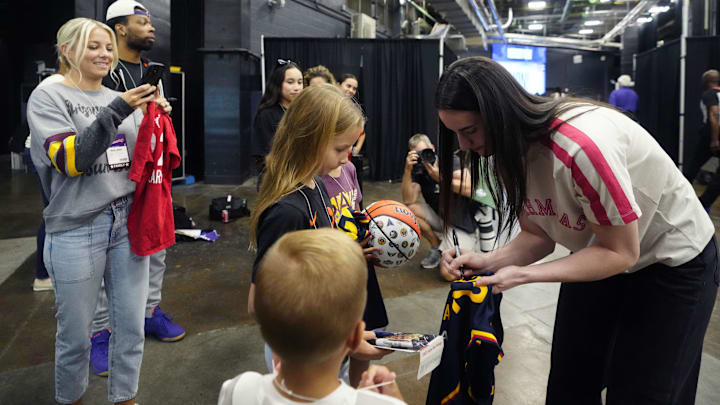On the Bird’s Eye View podcast with Sue Bird, Caitlin Clark said she feels a responsibility to get back on the court, not just for herself or her team, but for the fans, the ticket sales, and the ratings she’s been carrying on her back.
“It’s hard, because obviously I do feel this responsibility of being out there and playing,” she admitted. Clark’s words add to a growing reality in women’s sports. One player can move the needle in ways that are both exhilarating and exhausting.
The numbers back her up. WNBA viewership is up 21% this season versus 2024, but Clark-fueled games blow past league averages.
The season opener against the Chicago Sky drew in 2.7 million viewers, the most-watched WNBA game in network history. On the flip side, the game featuring both Clark and Angel Reese sidelined saw a big drop in viewership, drawing 1.5 million viewers. Outside of Clark matchups, non-Fever games are up 37%, while Fever games are up 7%, underscoring the impact CC has on drawing fans.
Athlete Welfare vs. Commercial Demand
Attendance spikes when she’s in town. Her jersey remains a top seller. Even when injured, she spends extra time signing autographs and interacting with fans, understanding that her presence is a draw all by itself. That’s the good news.
The bad news is it’s a lot to put on one player’s shoulders, especially when they are also rehabbing and learning how to pace themselves for a long career. Clark’s mother reminded her recently, “You've taken so much time for everybody else. You need to take time for yourself now.”
caitlin’s mom texted her after her most recent injury... she told her
— cc akgae (@clrkszn) August 8, 2025
“you’ve taken so much time for everybody else. you need to take time for yourself now.”
💔💔💔💔💔 pic.twitter.com/3F8RQmWiYT
READ MORE: Fever injuries highlight major flaw behind trade deadline strategy
But the reality is that leagues, sponsors, and media narratives can’t wait. We’ve built a sports culture that demands stars return fast, play through pain, and don’t let the momentum slip. Clark is too savvy not to understand her role in the bigger picture, and too competitive to take it lightly. That’s what makes her so magnetic and so at risk of burnout if the WNBA and its fans don’t give her space to be human and recover.
The league has a chance here to prove it values its athletes as much as its growth. Protecting Clark’s mental and physical health should be the priority, not just because she’s a generational talent, but because she’s much more than a ratings machine.
For now, Clark will keep working to get healthy, and the rest of us will keep watching. But if we want her to be around for years to come, we need to remember that greatness can’t be rushed, no matter how many tickets it sells.
